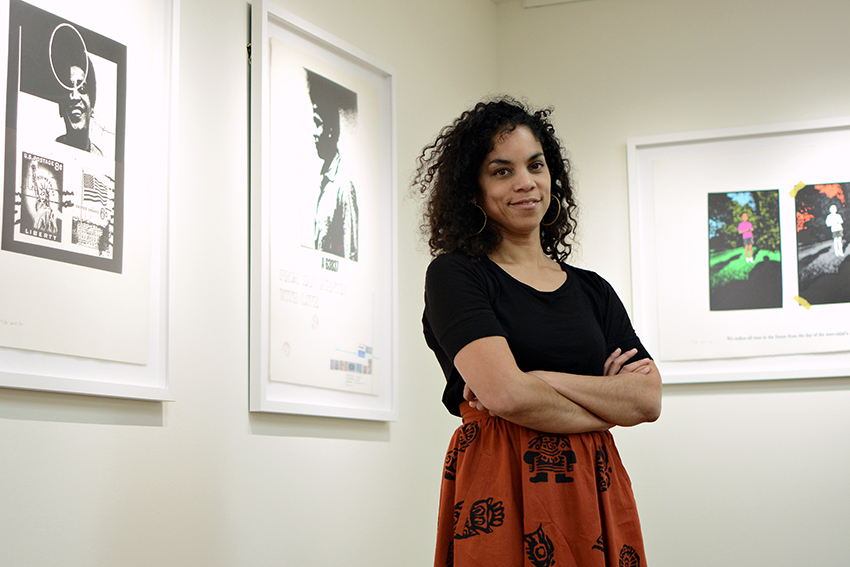Activist George Jackson’s words — “We must prove our predictions about the future with action” — greet visitors as they step into the IDEA Lab, encapsulating the mission behind his social justice efforts.
Until May 19, the John L. Warfield Center for African and African American Studies is exhibiting “Arts Meets Activism — Llewellyn Xavier’s George Jackson Series.” Warfield gallery director Lise Ragbir, who is curating the exhibit, selected the works on display and wrote an essay looking at how the roles of the two men converged, partly through an exchange of letters, to create the artwork at the exhibit. According to Ragbir, the galleries are devoted to exploring the intersection of creative expression and social justice.
“This exhibit forces people to consider how far we’ve come in the last 40 or 50 years and how far we need to go,” Ragbir said. “The sort of activism that was happening in the 1970s — we’re seeing a resurgence of the same kind of activism.”
Llewellyn Xavier, an artist from St. Lucia, left the island nation at 16 and found his way to London, where he involved himself with the black arts movement and began an epistolary exchange with American activist George Jackson.
“What I find remarkable about this series is that it really spans the diaspora: You have a Caribbean artist who went to London and was able to engage with an American activist,” Ragbir said. “This activist and this artist coming together speaks to the breadth of this span of narratives within the diaspora.”
Edward Chambers, professor of art and art history, said the first function the exhibit fulfills is its ability to inform.
“I suspect or I fear that a lot of people might not know anything about George Jackson. A lot of people might not be familiar with his biography or his writings,” Chambers said. “For those people, this exhibition is really going to help, because they can come in here and they can leave having garnered some kind of sense of the significance of George Jackson.”
Chambers said he finds Jackson’s devotion to resistance inspiring.
“Even though (Jackson) is in prison, and he’s beaten down by the system, one of the things that comes through in this exhibition and comes through in George Jackson’s writing is the ability to articulate one’s experiences,” Chambers said. “One of the things his writings do is they give us his blueprint of how important it is to articulate one’s own condition, because in a sense it’s the first step to making things better.”
According to Chambers, there’s a strong element of pathos within the exhibition.
“We have this sense of George Jackson as a child, and we might think he’s got this carefree childhood with his whole life ahead of him, and we see the ways in which the society is able to take one young child’s life and consign that to hell, basically,” Chambers said. “Why should it be that any person grows up and is not able to avail themselves of the full resources of the wide society? These are important questions that the exhibition raises.”
Although George Jackson advocated for justice decades ago, his legacy of trying to improve African-Americans’ quality of life is still thriving, especially on UT’s campus. Public health sophomore Kayla Eboreime, political action chair of the Black Student Alliance, helped coordinate a “die-in” last semester where students laid down at the base of the Tower to bring attention to institutional violence against black people in the United States.
“I think black activism is important because there isn’t equity yet,” Eboreime said. “Until there is equity, we need to keep up the fight for diversity and inclusion.”















